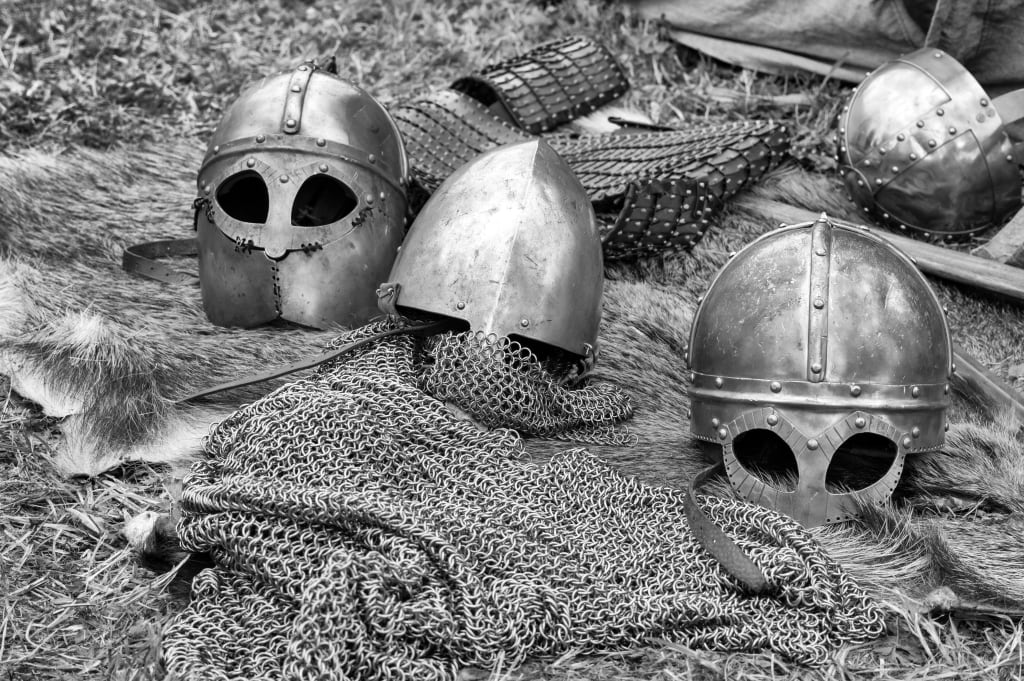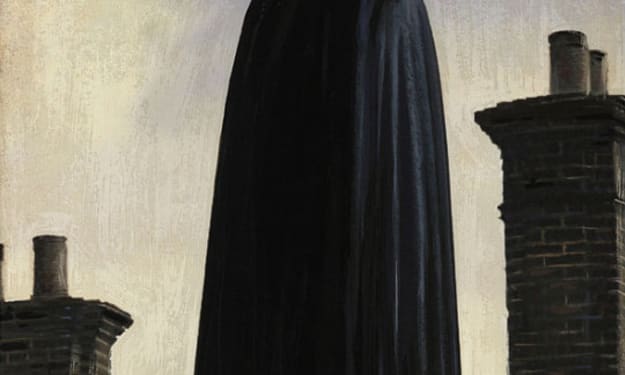Fifteen brilliant siege weapons used in ancient times
Unleashing the Power of Ancient Armaments in Warfare

Ancient civilizations were more intelligent than we often give them credit for, with ingenious engineers and skilled craftsmen constructing powerful weapons for their time. This article showcases fifteen remarkable siege weapons used in ancient times.
At number fifteen is the Greek fire, which was used when cities were under siege not just from land but also from naval forces as they were often built on the coast. The traditional defensive techniques were ineffective, and so they had to design new methods to deal with enemy fleets. The Greek fire, an incendiary weapon, was reportedly used first by the Byzantine Empire in the year 672. It was used to set wooden ships ablaze by launching a chemical compound into the water, likely containing naphtha and quicklime, which would burst into flames upon impact and continue burning on the water. This weapon was crucial for the empire's defense of Constantinople during the first and second Arab sieges of the city, and it provided a significant military advantage. The Byzantine Greek fire was a closely guarded secret, and only a handful of military scientists knew how to produce it. However, all records of the manufacturing process were lost when the empire fell, leaving us to speculate on the actual ingredients.
At number fourteen is the battering ram, which was an essential tool for breaking through the defensive walls of cities during ancient times. These were huge logs that were suspended on ropes, and they swung back to generate enough momentum to swing forward and exert a massive force on the target. The weight of the ram meant that applying a sideways force on stone and wooden structures would cause cracks that could be exploited to cause the walls to crumble. However, using battering rams made the troops vulnerable to attack by the defensive forces, so later designs incorporated canopies that were both arrow-proof and fireproof to protect the people operating them. The improved design allowed the rams to be used much earlier on in the battle than had been possible previously. Battering rams became obsolete with the introduction of gunpowder and projectiles.
Overall, these siege weapons demonstrate the ingenuity and tactical prowess of ancient civilizations in their military campaigns. Before the introduction of ballistae, other weapons were used on the battlefield, but once they were developed, they became one of the most effective pieces of equipment.
Number 13 on the list of ancient weapons, ballistae were essentially huge crossbows that could be loaded with heavy bolts and stones. They were used to disable and destroy enemy armaments or inflict massive casualties on opposing troops. The Greeks were the first civilization known to use a ballista-like device, as early as 400 BC. The Romans also adopted them as a mainstay of their military force and deployed them across Europe to capture and defend new territories. However, ballistae required a higher level of engineering ability than other weapons, and their use faded away following the fall of the Roman Empire in favor of simpler designs. Researchers in the 19th century were unable to recreate or understand how they functioned as weapons until modern engineering caught up in the 20th century. Ballistae are an example of how the Romans out-engineered their opposition as much as they out-fought them with military training and tactics.
The Beyotian flamethrower, believed to have been the first flamethrower ever used, was a device that was employed during the Peloponnesian War in 420 BC. The Greeks and Spartans were battling, and any technological edge had the potential to turn the tide of war. The flamethrower itself was made up of an iron beam that had been scooped out and had a cauldron hanging from a chain at one end and a bellow at the other. The cauldron would be filled with a mixture of lit coal, sulfur, and tar, and a small hollow pipe fed into its center. When the operator used the bellow, which involved sitting on top of it, the air would blow out into the cauldron and provide a burst of oxygen, which, in turn, would create huge flames. The flamethrower was extremely effective against cities with wooden walls, burning them to ash along with any enemy troops nearby. They were also effective against stonewalled cities; the temperatures achieved by the flamethrower were so intense that the stone would begin to crack. These weaknesses would then be exploited by a mixture of vinegar, urea, and other corrosive substances to create larger structural defects that would eventually cause them to collapse.
The counterweight trebuchet was a formidable siege engine that was widely used for centuries until the introduction of gunpowder made them obsolete. These large catapults were believed to have originated in the 11th or 12th century and consisted of a long throwing arm with a counterweight on one end and a rope holding the ammunition on the other. Due to their size and fixed position, they had to be built close to enemy fortifications, but once in place, they were capable of launching huge projectiles with great force and accuracy. However, the device had to be solidly built to withstand the forces exerted upon it, making full-size trebuchets impractical for many armies. Nevertheless, when faced with large fortifications, the counterweight trebuchet was the most effective option, and its mere sight often led to desperate measures by defending armies. In contrast, the Claw of Archimedes was an ingenious, bizarre, and deadly siege weapon designed to defend a city under siege against naval attacks. This device, created by Archimedes for his home city of Syracuse, consisted of a huge crane with a grappling hook that would be dropped onto enemy ships, causing them to capsize or drop a significant distance back into the water. The city was fitted with several such devices during the Second Punic War, where they proved instrumental in repelling Roman attacks. Finally, a siege tower or breaching tower was a specialized siege engine designed to protect attackers as they scaled enemy walls. They were built to be the same size as the city's armaments and mounted on four wheels to allow them to be pushed right up to the walls. Soldiers could easily climb up using the ladders inside without fear of being shot by archers. Siege towers were also covered in a flame-proof material to prevent them from catching fire. The Babylonians were the first to use siege towers in the 11th century BC, constructing them from scratch on the battlefield. Various designs were used, depending on the battle's conditions, but most had gangplanks that could be lowered over enemy fortifications, allowing soldiers to quickly run across and engage in combat.
You may have heard of caltrops from modern times, but they have actually been used for thousands of years, at least since the time of the Roman Empire. The Romans called them tribulus, which means "jagged iron," and they are made of metal with four sharp prongs at different angles. This design ensures that at least one spike is pointed upwards when dropped on the ground, making them effective anti-personnel devices. Caltrops were particularly destructive to horses and early vehicles, such as chariots, as a spike in their feet or wheels would render them useless. They were also used by defending cities to create a region of no man's land. Caltrops have remained effective in modern warfare, with slight adaptations to enable them to puncture vehicle tires.
Petards are a medieval weapon invented by the French. They are small bomb-like devices that contain five or six pounds of gunpowder, with a slow match added as a fuse. They were mainly used to blow holes in gates and fortifications to overwhelm a city. Petards were specifically shaped to channel most of the concussive force towards a small target to cause maximum damage. Sometimes they were even nailed to enemy gates to ensure they caused as much destruction as possible. However, there was a danger when using them, as the fuses weren't always reliable, and there were accounts of petards exploding while still in the hands of the person setting them. This would result in the person being "hoisted by their own petard."
The Sambuca was a naval siege engine created by Heracliades of Tarentum and used for the first time during the Roman siege of Syracuse in 213 BC. Two ships lined up alongside each other, each with a tall tower that doubled as the mast. These towers were attached to an assault bridge that lay between them. Once they approached the target city, the bridge would be raised and rested on top of the defensive walls. Soldiers on the ships could then run up the bridge and enter the battle. In theory, this was a good idea, but in practice, it never fully lived up to expectations. The Sambuca collapsed while being hoisted during the Roman siege of Syracuse and also suffered similar faults during the seas of Chios in 201 BC and the siege of Rhodes in 88 BC. However, the Greeks and Romans remained convinced that it was a good idea, and it's believed that they finally perfected the design and used it in a number of nautical sieges over the following century.
Circumvallation is one of the most powerful defensive structures a city could build. It involved building an entirely new wall, trench, or fortification around the city, but one that was controlled by the attackers. This ensured that no new supplies could be smuggled into the city and rendered defensive weaponry useless too. The first recorded use of circumvallation took place in 429 BC during the Spartan siege of Plateau. It was also a favored tactic of Julius Caesar, who used it to defeat the Gauls in the siege of Alesia in 52 BC. The method proved so effective that militaries used it in the Middle Ages too, such as during the siege of Constantinople in 717 AD, where a huge stone wall was built between the city and the surrounding countryside. This restricted supplies to the city and protected the attackers from reinforcements.
According to historical records, the large weapons used for war in China were called "engine of war," while in Arabic they were known as "al-manjaniq." These weapons were 17 feet tall and were buried four feet into the ground for stability. They had a throwing arm up to 35 feet long, with three quarters of the arm above the pivot and attached to a two-foot-long sling. The remaining part of the arm was below the pivot and had a series of ropes attached to it. A team of men would pull on the ropes simultaneously, and a skilled crew could launch the projectiles up to 300 feet. These weapons were not typically used for city fortifications but were occasionally used to pound enemy walls that were difficult to breach.
During a siege, the lack of supplies within city walls presented a significant challenge. In the 1552 siege of Edger, where the defenders were outnumbered and outgunned, a man named Gergely Burnismiza used his creativity with gunpowder to create weapons. He packed a water mill wheel with gunpowder, oil, sulfur, and flint and rolled it down the hill towards the Ottoman troops, causing an explosion that killed and injured hundreds of soldiers.
The bubonic plague has resurfaced throughout human history, killing millions of people. In 1343, the Mongols tried to take the city of Kapha, but after a long siege, they were unsuccessful. When they returned two years later, the city was ravaged by the black death, which the Mongols had contracted during their journey. As a last resort, they loaded dead bodies onto catapults and launched them over the defensive walls, causing the residents to flee and taking the plague with them throughout Europe and Asia. This event marked the first recorded instance of mass-scale biological warfare.
Archimedes, a resident scientist in the city of Syracuse, created a "death ray" mounted on the city walls that could set fire to a ship further away than the range of any other weapon. It was made up of a series of polished lenses that channeled the sun's rays into a powerful beam. This invention played a significant role in defending Syracuse against Roman advances, and despite ongoing debates, it is generally believed that it worked exactly as legend describes.
The device generated extreme heat within a short period, which could have led to the sails catching fire and the entire ship sinking. Roman historians suggest that the weapon played a significant role in convincing the empire to abandon their attempt to control Syracuse and instead partner with them to exchange technological knowledge. However, there is no evidence that Archimedes shared his design with anyone outside the city walls, and there are no records of this device being used elsewhere. It was only in modern times that researchers recreated the device to test its functionality.
About the Creator
Bob Oliver
Bob is a versatile writer & communicator passionate about exploring diverse topics & perspectives. I have written for various media outlets. And I believes in using words to inspire positive change. #writing #communication #passion
Enjoyed the story? Support the Creator.
Subscribe for free to receive all their stories in your feed. You could also pledge your support or give them a one-off tip, letting them know you appreciate their work.






Comments
There are no comments for this story
Be the first to respond and start the conversation.